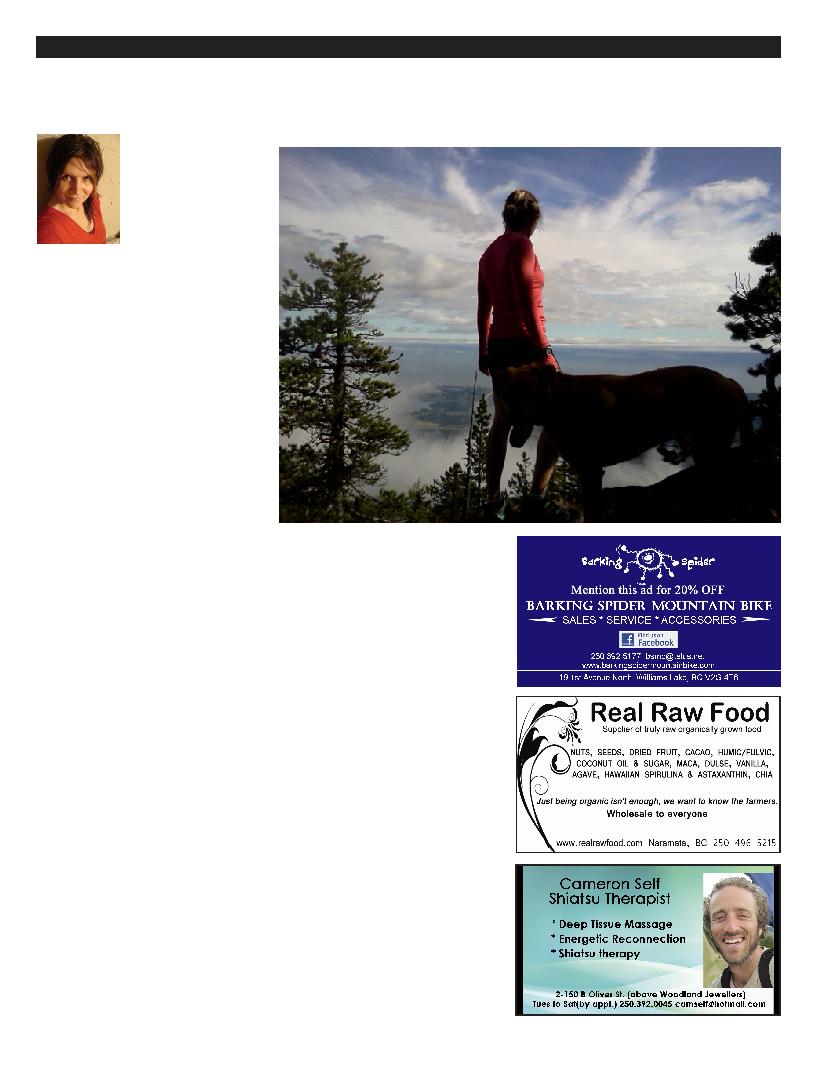
about all I've ever had to say to anyone who
has tried out Canada's fastest growing indi-
vidual sport, and they know just what I mean.
non-paved, nature-like surface--is about as close to
zen a person can get in while wearing flashy shoes
and drenched in their own sweat--but you don't have
to take my word for it.
indigenous cultures and religious groups the world over
have lived the joy of trail running to its height for thou-
sands of years.
runners, so much so that they were able to outrun quad-
rupeds, giving new meaning to the term "fast food."
The Bushmen of the Kalahari still practice this amazing
feat, which is as much about retaining their culture as it
is about having dinner.
book, "Born to Run." "You can be walking home after
an exhausting day of collecting yams, but if fresh game
scuttles into view, you drop everything and go."
most skilled trail runners, embracing the practice for
play, food procurement, celebration, and competition.
Calling themselves Raramuri, which means "runners on
foot," or "those who run fast" in their native tongue,
men, women, and children can run up to 200 miles at
once over rough terrain that has swallowed up many a
wishful and unprepared explorer. They are the subject
of McDougall's book which, by the way, is a fantastic
read for anyone interested in any type of athleticism, or
human nature, for that matter.
and 82 miles a day for 1,000 straight days to achieve an
enlightened state of being that puts them in touch with
their primal nature.
Avoiding the pavement means less impact stress on
your knees and joints, lessening the prevalence of an-
kle, shin, knee, and hip injuries. Even chronically in-
jured road runners can often put in several miles a week
on trails, because the ground is softer and the pace
tends to be slower, especially if the trail is rocky or
covered in tree roots.
chologist who prescribes trail running to his patients
suffering from depression.
working," says Dr. Jerry Lynch in the article. "I steered
them toward trail running and they became more at
peace with themselves and found joy."
tive being in touch with nature provides--combine this
scientifically proven benefit with the effects of endor-
phins released from any exercise and what you have is a
goodness.
invisible air molecules released by trees that are known
to increase oxygen flow to the brain--alleviate sea-
sonal depression as effectively as Prozac or Zoloft."
the okay from the doctor, and take it slow to begin
with. The next time you're in the woods, wear decent
shoes and kick it up a notch. Pick a slower pace than
you think you are capable of, use a short stride, and try
to land mid-foot rather than on your toes or heels.
ning and more than 10 K once your runners have some
wear on the tread. And yes, good runners are important.
I'm not one to buy into advertising, but I have run in
cheap, worn out shoes and can tell you all about shin
splints to prove it.
and balance. (I find yoga is a nice complement to train-
ing for trail running races.) But at first, start on a flat
trail, gradually progressing to more challenging terrain
that includes hills, dips, and longer distances.
getting out there. My favourite reason to trail run is the
varied terrain. I can't get enough of rooty single track,
opening up to slick rock faces, which lead to deserted
logging roads, before opening up to wide, open mead-
ows. Besides blasting boredom directly out of the equa-
tion, every step is a new conquest, requiring a different
stride, a change of pace, and constant mental engage-
ment. Like I said, trail running is awesome.
Senior Editor of
TheGreenGazette